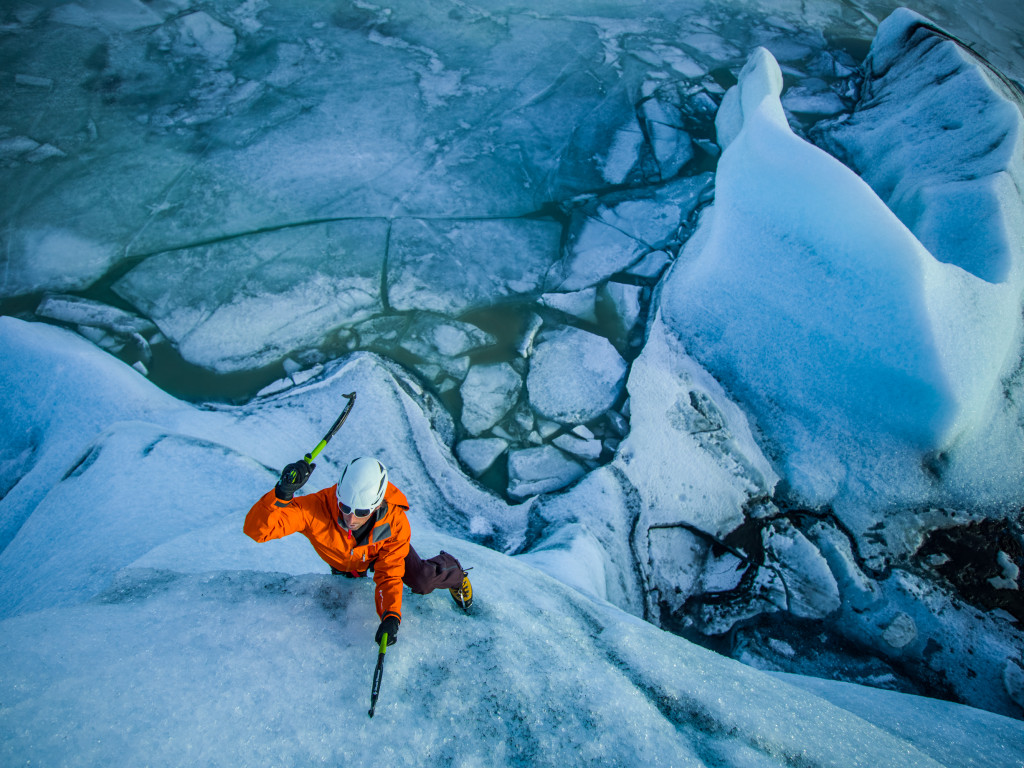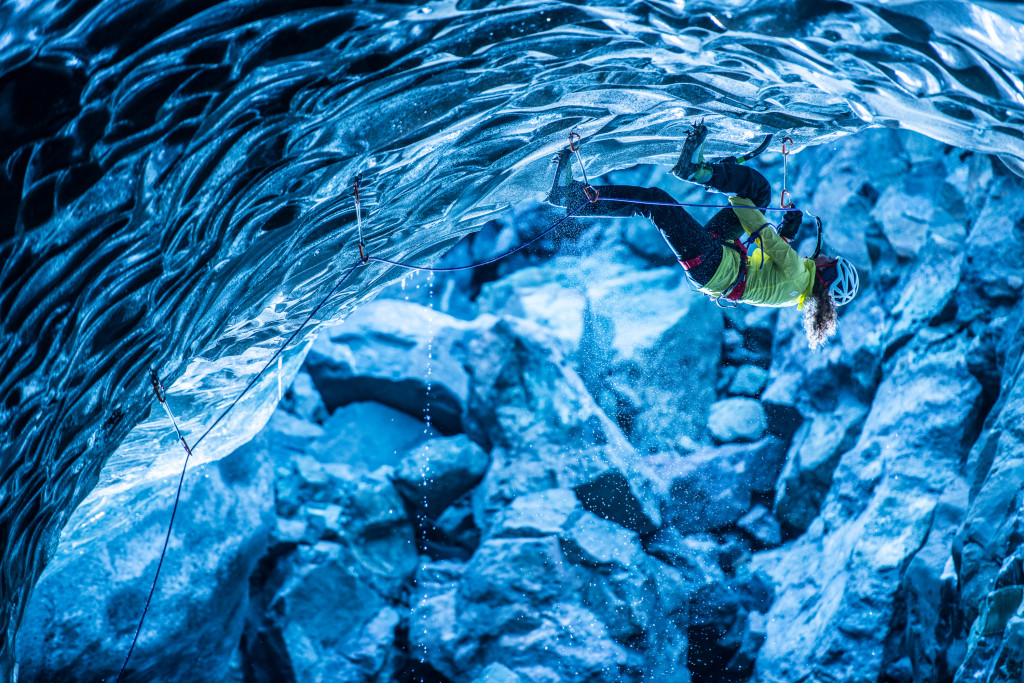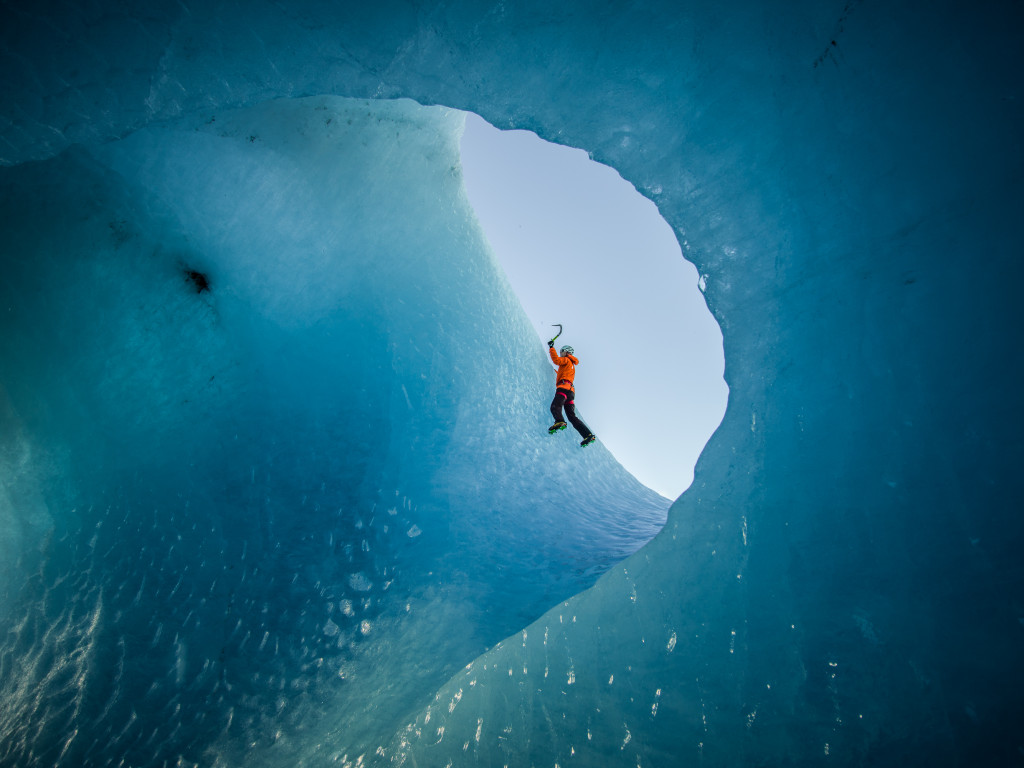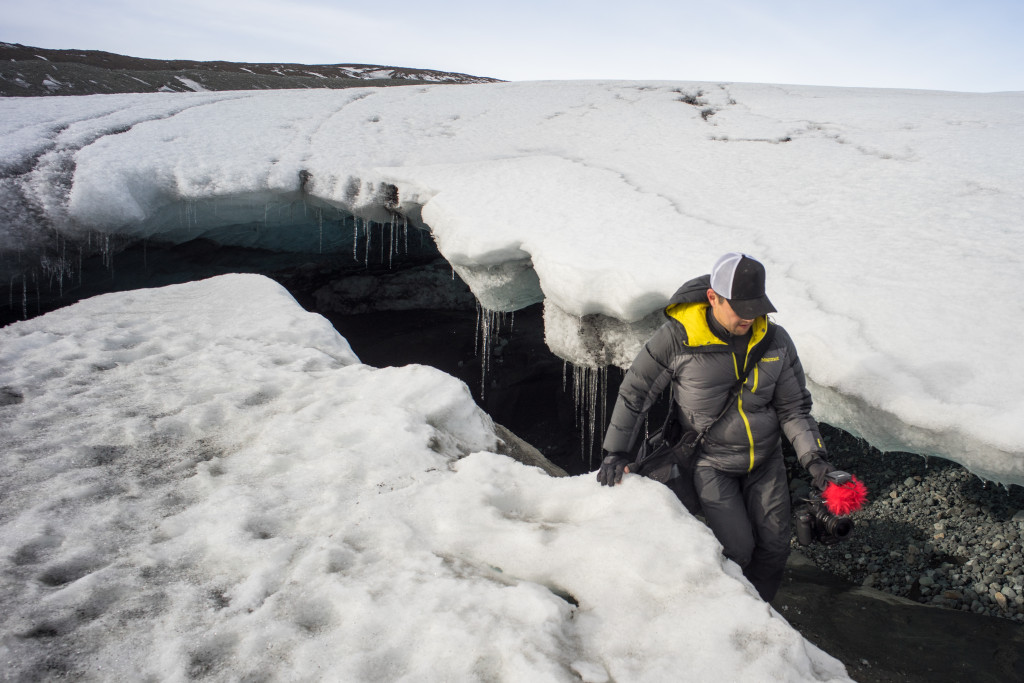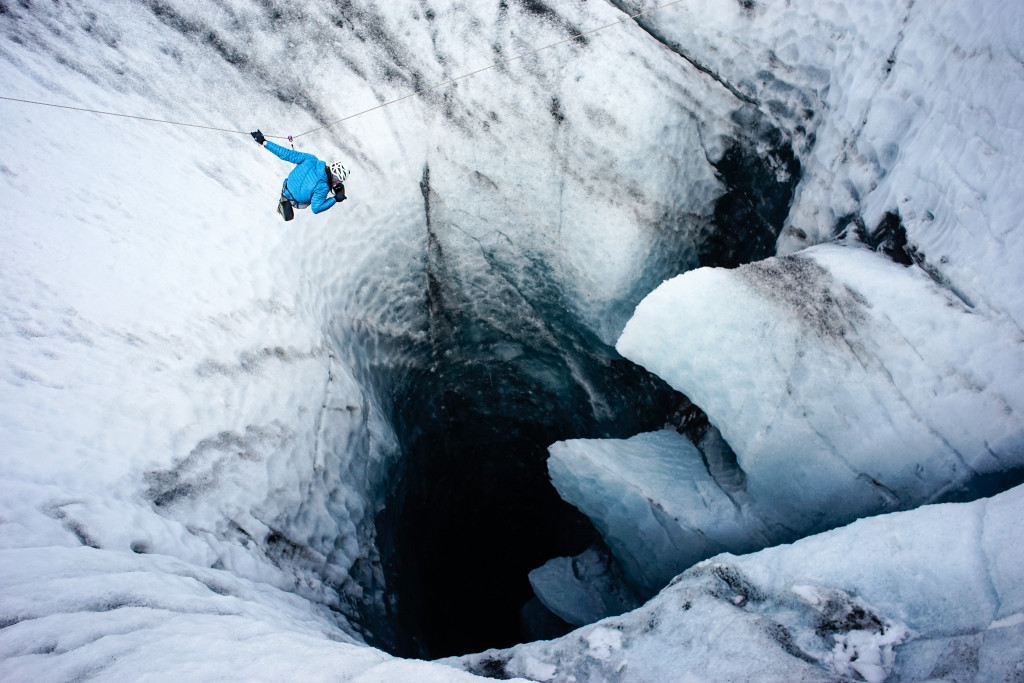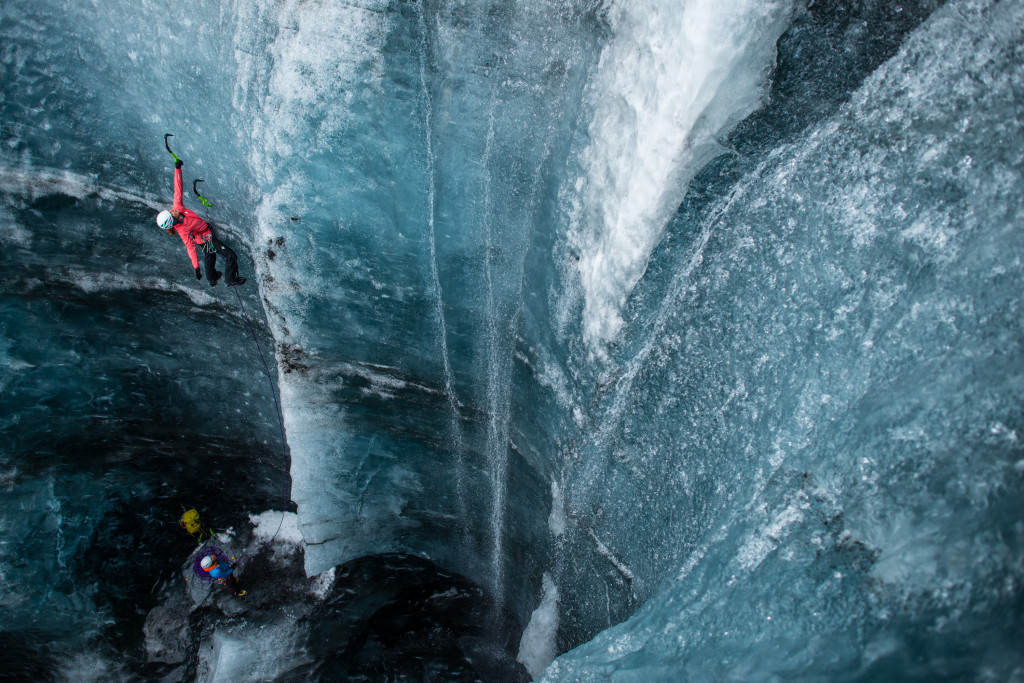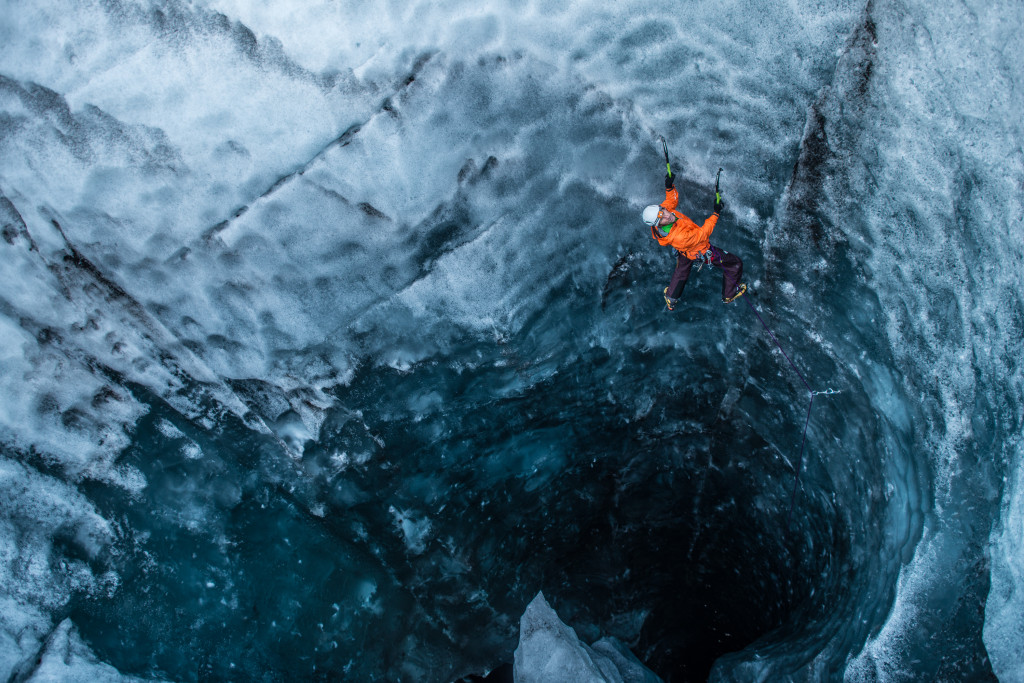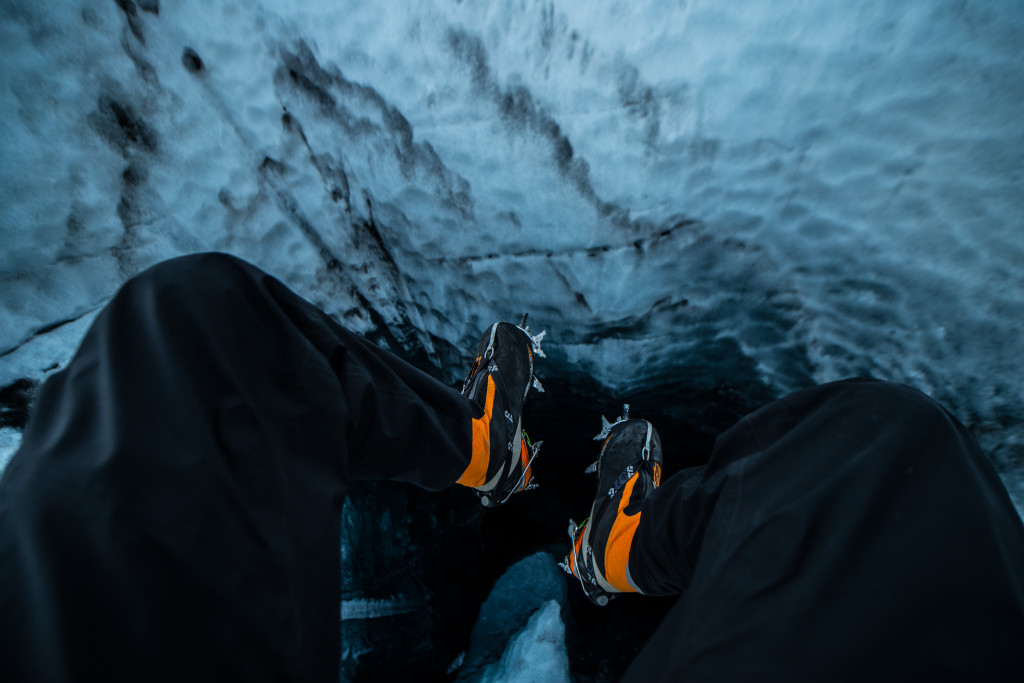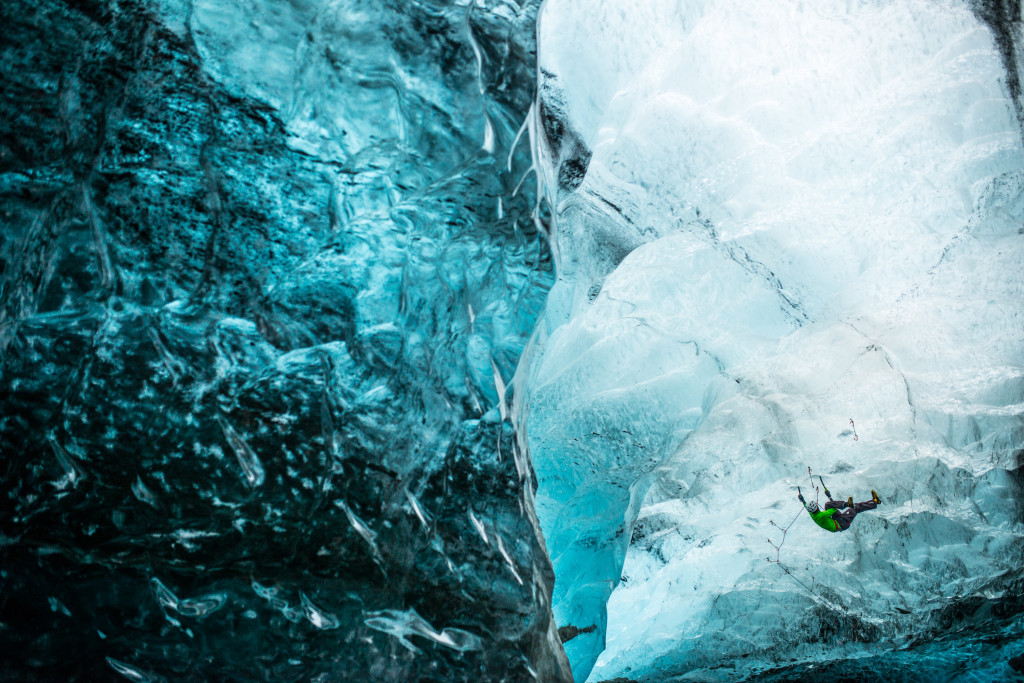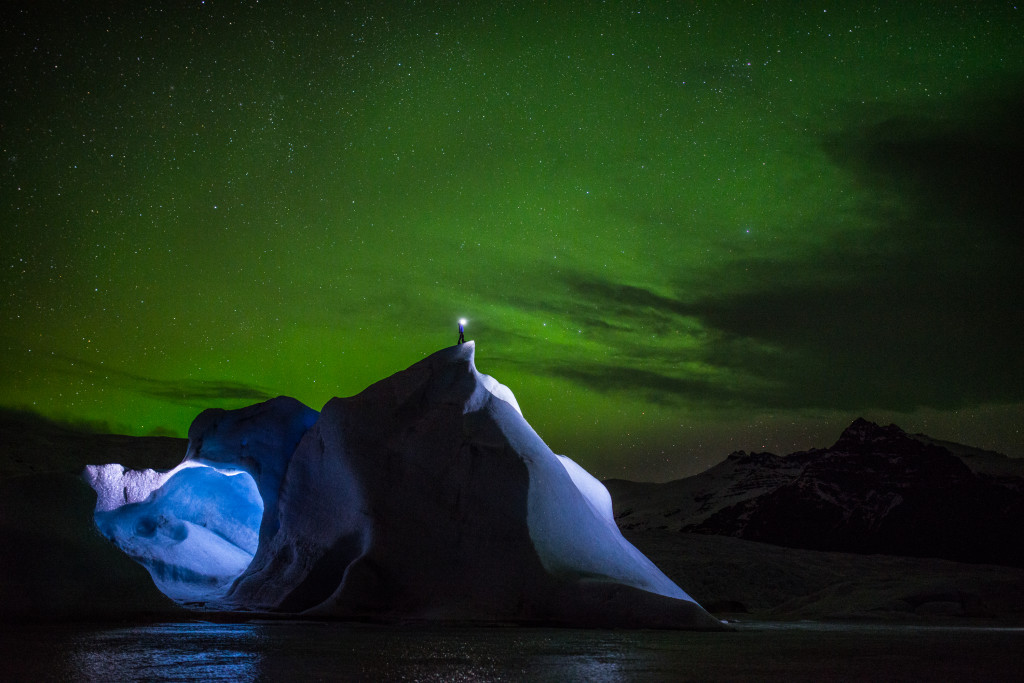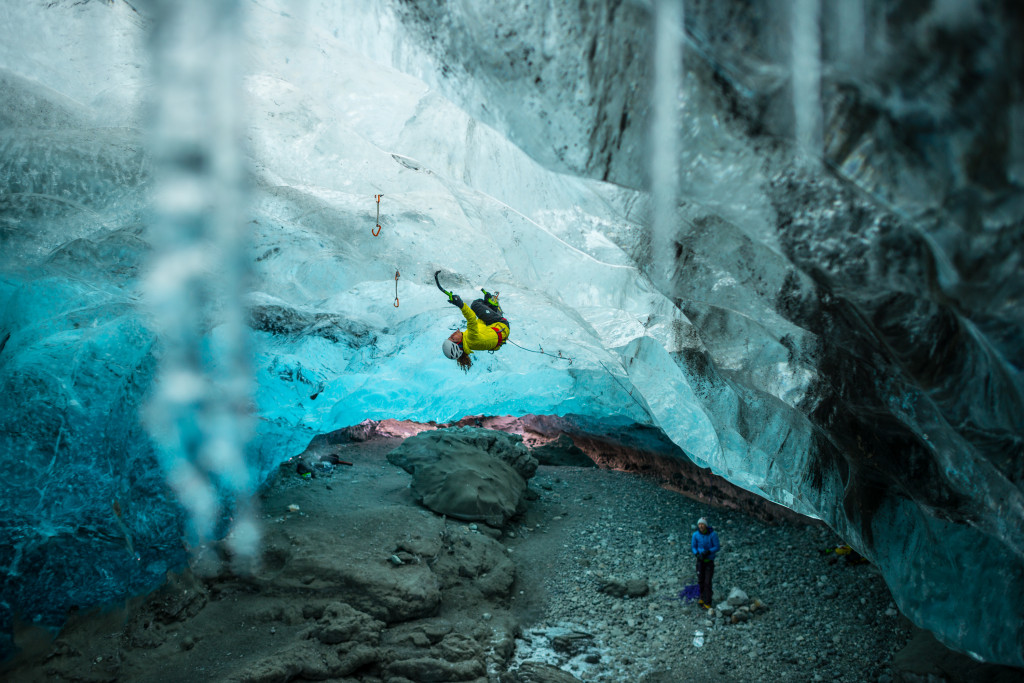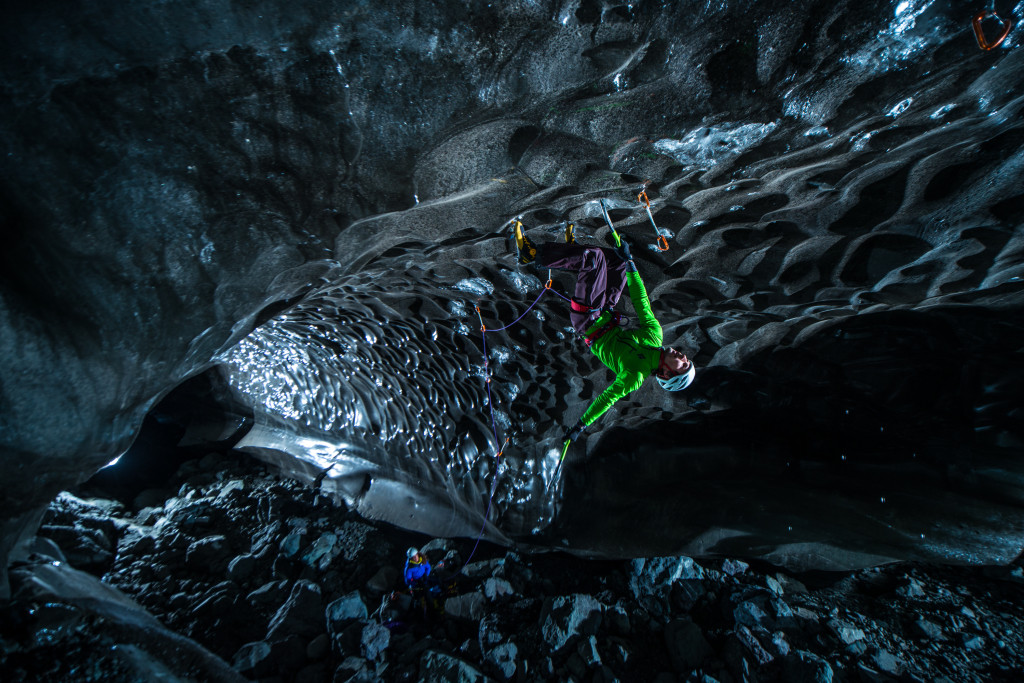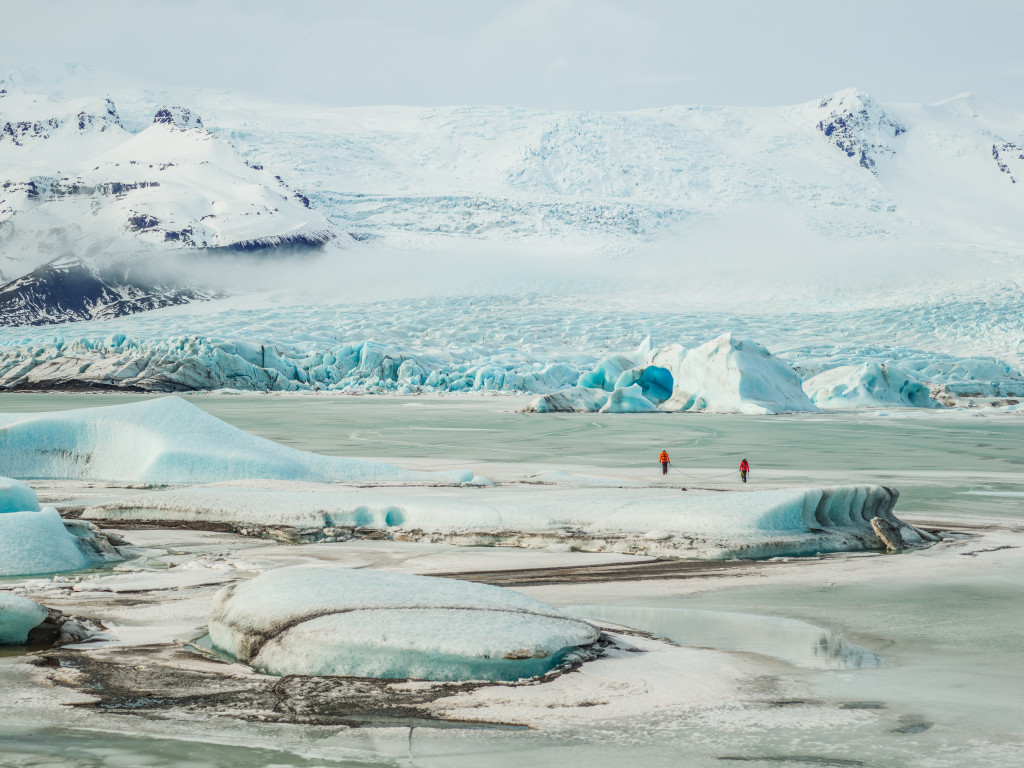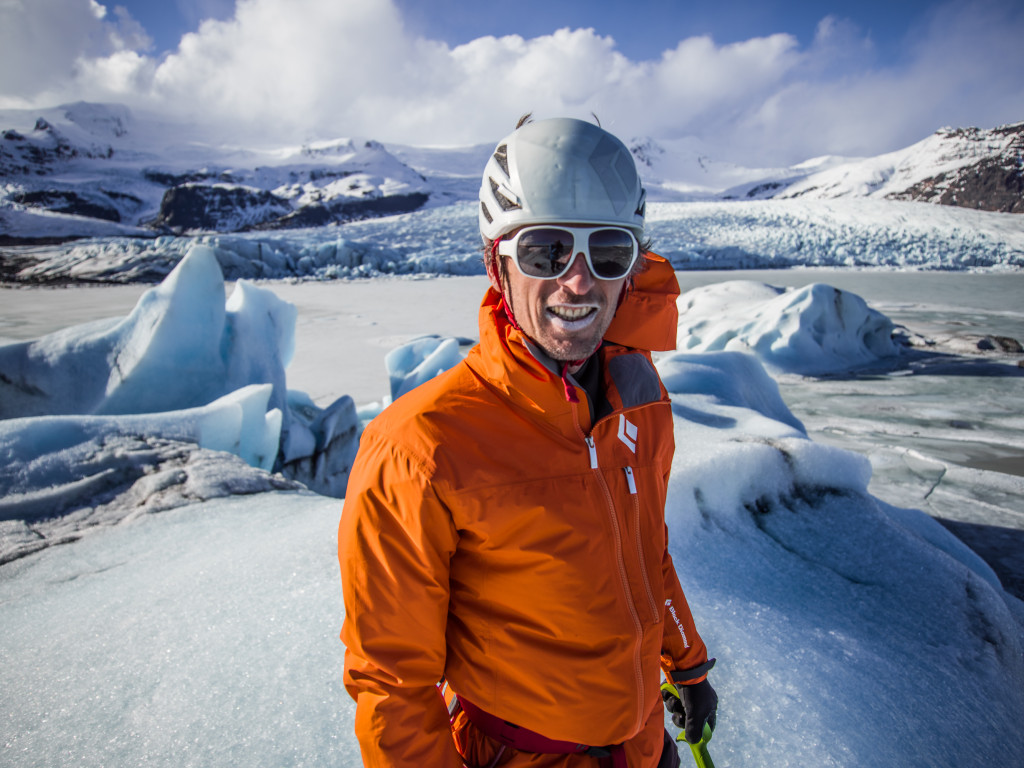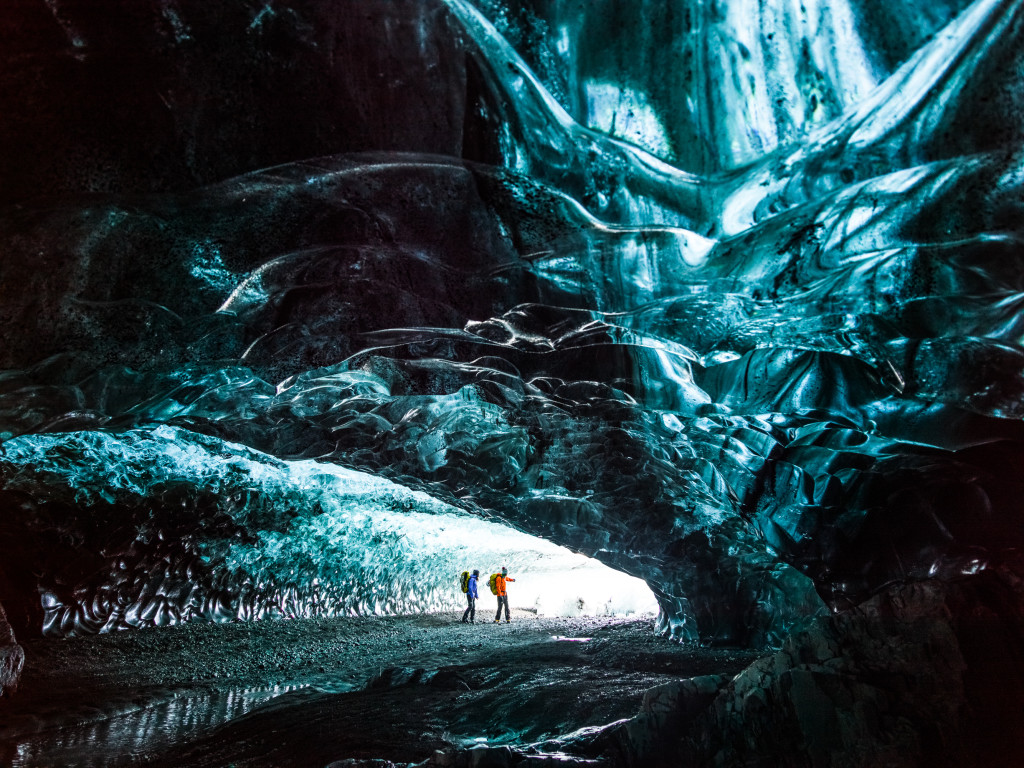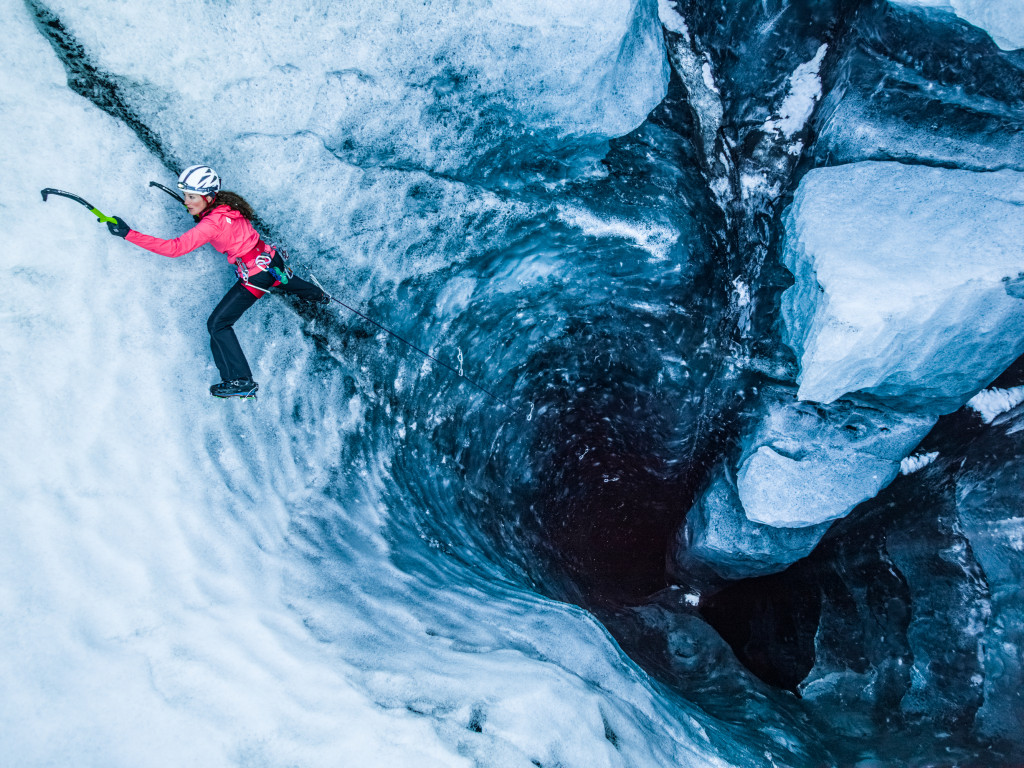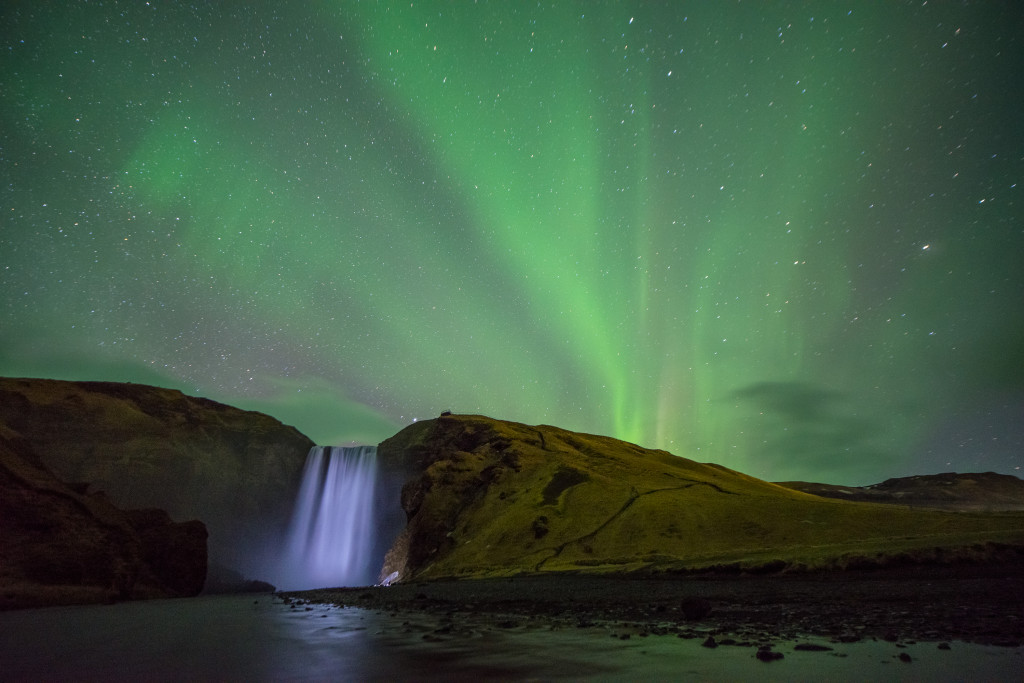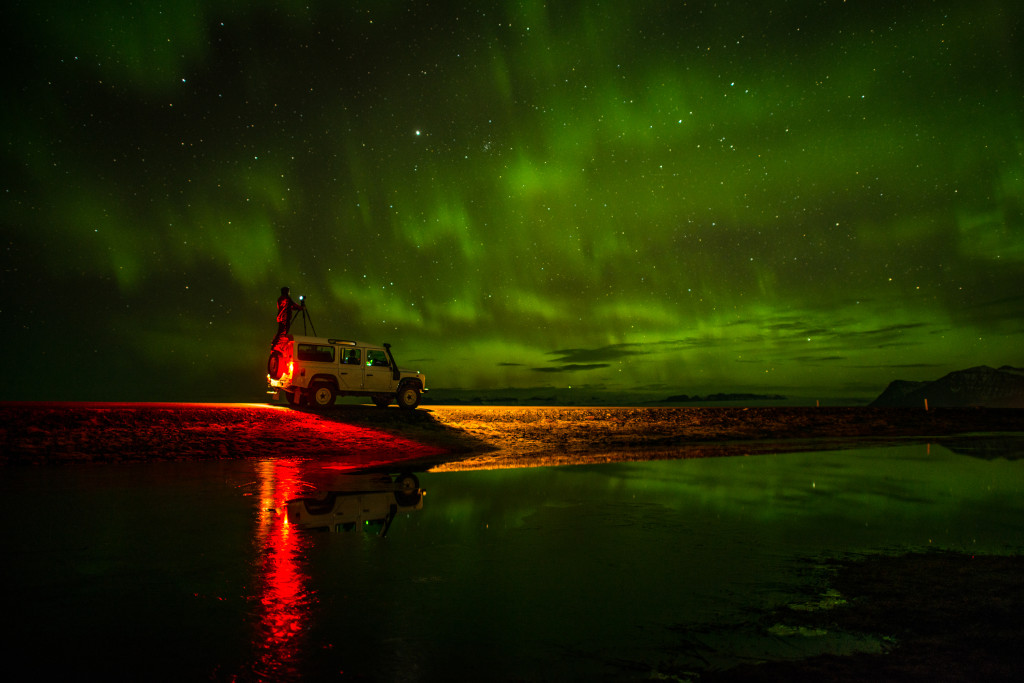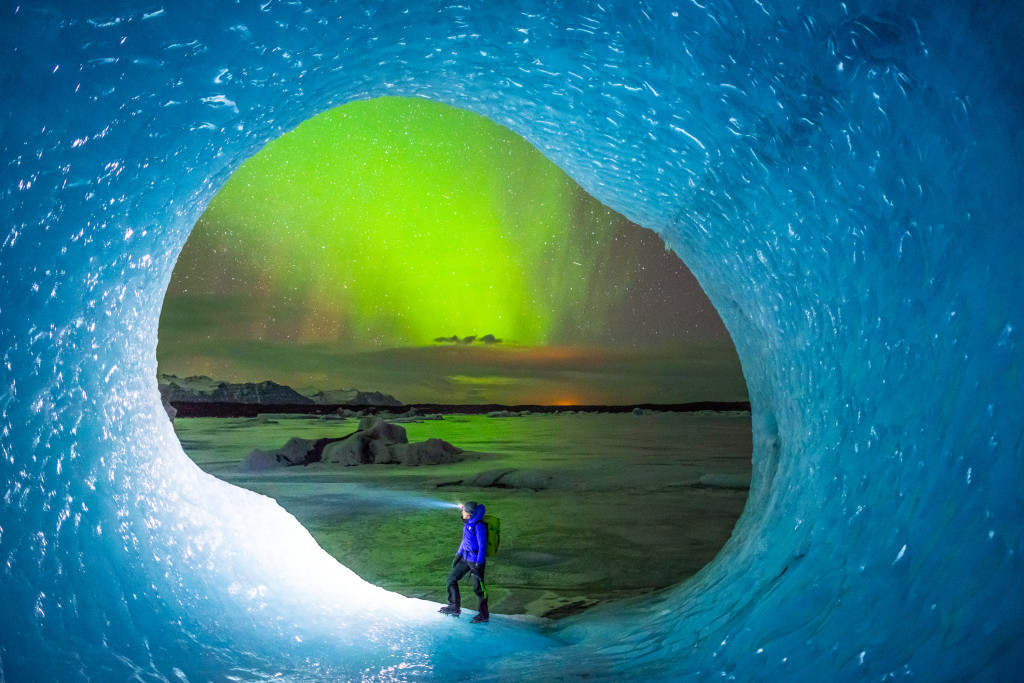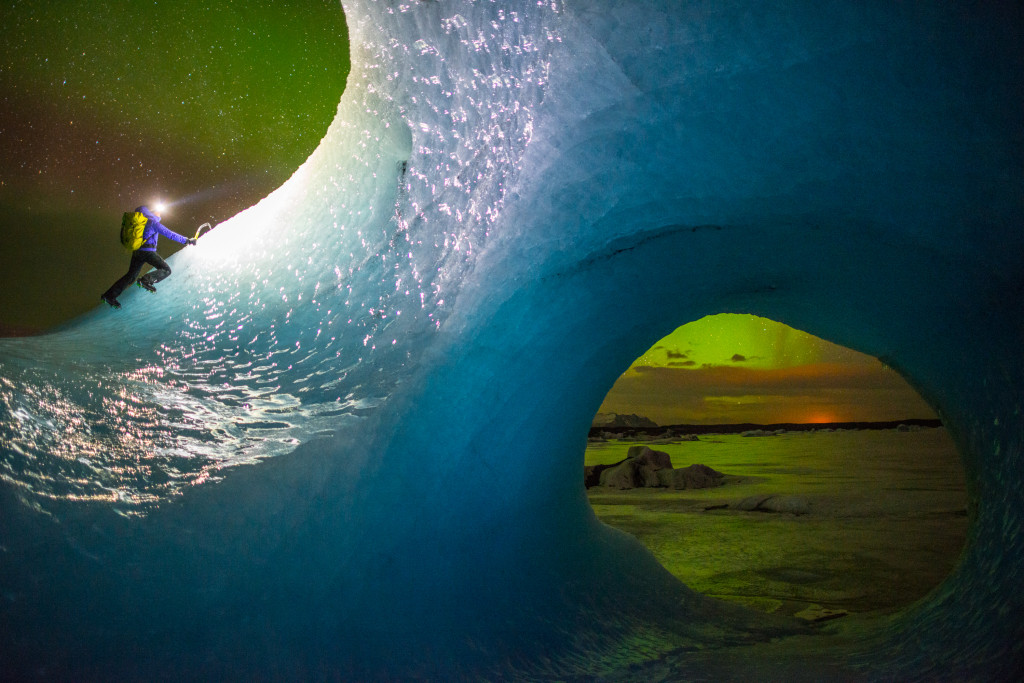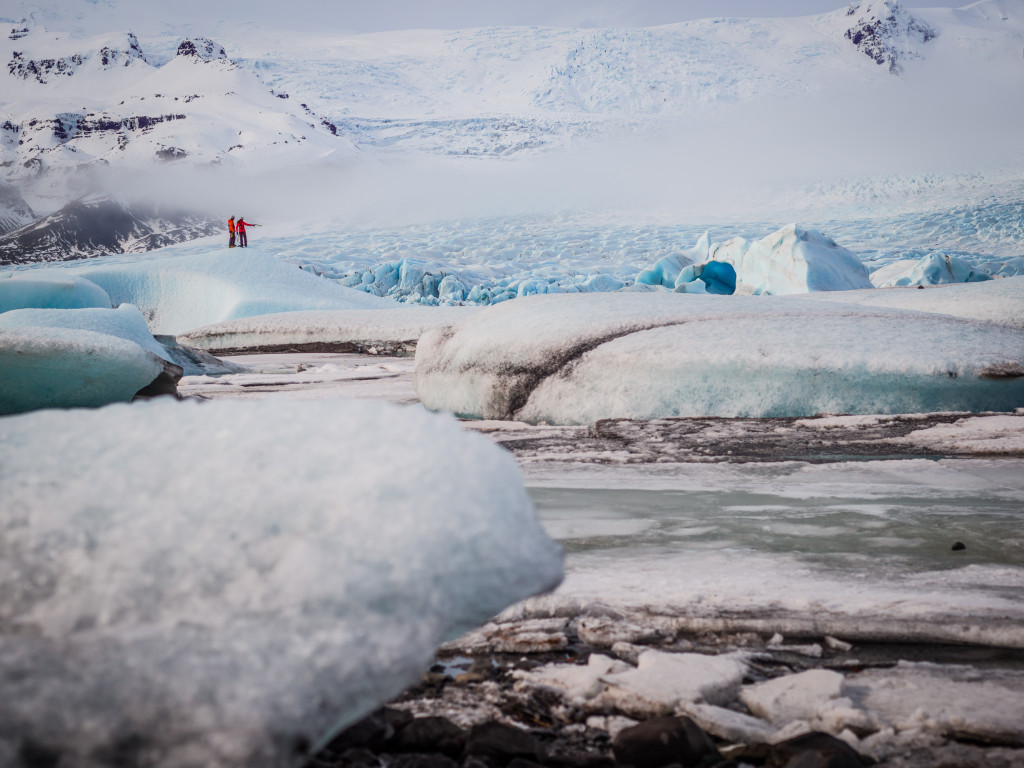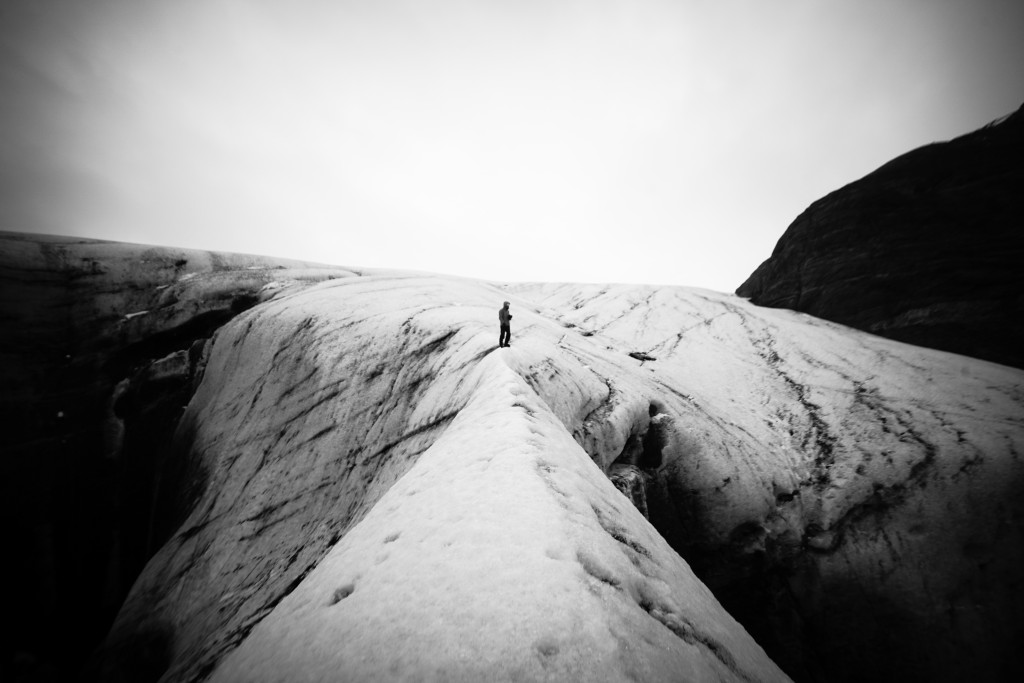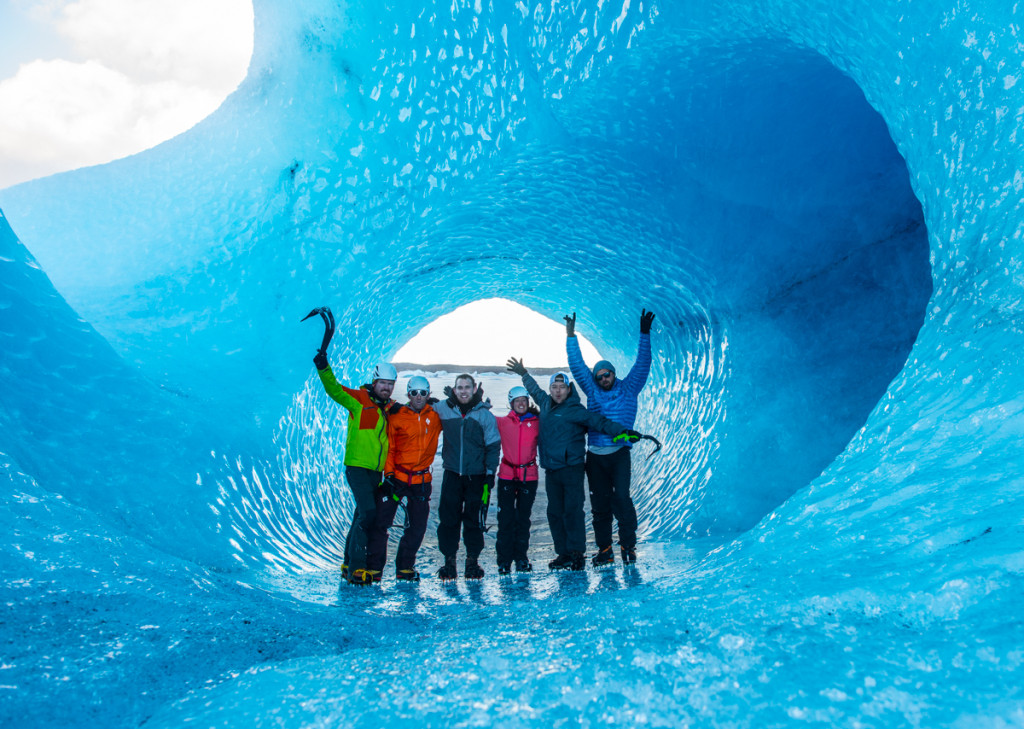SmugMug Films, best known for their inspirational documentary that followed surf photographer Chris Burkard as he embarked on an adventure in Norway, has once again managed to create a photographer biography so compelling, it will deserve every film festival award it receives. In their latest release, “Climbing Ice: The Iceland Trifecta”, filmmaker Anton Lorimer followed adventure photographer Tim Kemple to the European island nation to document the dangerous and beautiful sport of Ice Climbing.
Joined by professional ice climbers Klemen Premrl and Rahel Schelb, Lorimer and Kemple set out to find the best climbing locations in Iceland. First on their list was Vatnajökull Glacier, a massive ice cap so large, it can easily be seen from space. The glacier contains enormous holes, or moulins, which descend hundreds of feet into the dark underbelly of the glacier. As Schelb and Premrl descend the icy walls, Kemple is suspended on a line across the moulin, twisting his body to achieve the compositions he is seeking as Lorimer’s drone flies overhead, delivering jaw-dropping visuals rarely seen before.
After conquering the moulins, the team doesn’t dare ruin the momentum they had built, and the following morning they headed back to the Vatnajökull Glacier, but this time, they had their sites set on the crystal blue ice caves that formed under the ceiling of ancient ice. In the caves, we witness what was perhaps the most difficult challenge of the young climbers’ recent careers. Scaling the caves, at times completely upside down, is a visually stunning experience for the viewers, as the action feels so real, we can imagine ourselves in the cold and quiet cave, witnessing these extreme athletes giving it all they have.
To complete the Iceland Climbing Trifecta, the third act takes us along as the team finds an impressive iceberg. Premrl had a recent close call on an Iceberg in Greenland, so the team approached the climb safely and cautiously. We are along for the journey as the climbers ascend the Iceberg and celebrate with a high five atop the mountain of ice.
SmugMug Films has a reputation for producing high-quality content, but this film has taken the production levels to a new extreme. And the man behind the camera, Anton Lorimer, sat down for an exclusive interview with Resource Travel to discuss the fears and the successes that this film provided.
What was your biggest fear when making this film? Was it fear of actual danger? Crumbling ice, falling off of icebergs, etc…or was it fear that you knew how amazing the story was…and you didn’t want to do it anything short of justice? Or was it a little bit of both?
My biggest fear when I produce these photographer profiles for SmugMug is doing the photographer’s work justice. These photographer’s are producing incredible and inspirational content, and I want to make sure my films perform on the same level. Tim Kemple, for instance, is one of the best in the business, and the location we chose, Iceland, is one of the most beautiful places on earth. Bringing back what you see through your eyes, and translating that into video is a tough task, especially in Iceland. It’s so beautiful, and you just hope you can capture the epic, grandeous feelings of the waterfalls and ice caves, and especially the glacier itself.
We knew before we arrived that we wanted to film in the ice caves. I was really worried that the caves would be too dark for video, but luckily, once we got into the caves, the fear subsided as I saw that we had plenty of available light, so I was able to shoot with the settings I wanted.
And yes, some of my fears were with the physical safety. This was the first time my production assistant Kevin Harrington and myself had been on a glacier. As we strapped on our crampons on the first day, our guide said “So everyone here has been on a glacier, right?” We both sheepishly raised our hand and admitted that we hadn’t. We were briefed on every safety measure possible. Once we were walking, it seemed easy enough, until we got to the moulins. It became quite scary about that time. We went on ziplines across the moulins, held in by nothing but ice screws. I have done alot in my career, but this trip really was outside of my normal comfort zone.
And after the trip was over, the fears came full circle. How could I possibly do this experience justice? After many months of work, I have finally produced a film that I am very proud of, and I hope that it does Kemple and the incredible climbers justice. I hope people have an appreciation for the danger and the dedication that they put in, day in and day out, to bring us along for the ride.
RT: Your use of a drone to capture some unique and nearly impossible shots is evident. Where would you imagine the directions of your films if it wasn’t for your addition of the aerial footage?
The drones instantly add a production value that in the past would have cost a lot of money. Would this film be the same without the drone footage? I really don’t think so. I don’t think we could have really captured the epic feel of the Icelandic landscape, and in particular, the glacier. We could have rented a helicopter, but again, the financial hit on that is much larger. But the big advantage of using the drone instead is the ability to get in really tight. You can fly under tree lines, through ice caves, into a moulin, and fly right next to a climber. You could never to that with a helicopter. Also, I am not an ice climber. I couldn’t ever get those impossible shots of them looking straight down into the moulin. We couldn’t get that dramatic shot of flying through a hole in the iceberg by shooting handheld. We needed the drone. I couldn’t imagine making this film, or any of my future films, without the beautiful shots that a drone can provide me.
Lastly, we thought you had hit your pinnacle with the incredible film on Chris Burkard, but this is another level. Where do you see your next film going from here? If you could pick any subject, anywhere in the world to document next, where and what would it be?
I don’t know…but I do know Artic Swell, and this film, were made in really cold environments. It creates a really dramatic backdrop that is hard to take your eyes off of. You want to see people interacting in these environments, an environment that they shouldn’t be interacting with. So I would love to work on another project in the Arctic. But on the other hand, I would love film in Fiji, or somewhere else warm.
Ideally, the best project would be something in a beautiful environment, but something that really highlights the local cultures, and produce something culturally significant. This Iceland film was special for me, because I was able to tell a story. It wasn’t just eye candy. And the story always comes first in my films. Obviously, the beautiful scenery helps, but ultimately, I want to tell people’s stories, and I hope we continue that as we expand our SmugMug Films profiles to other locations and artists.
See more about this film on SmugMug Films.
All images by Tim Kemple unless otherwise noted.
Photo By Klemen Premrl
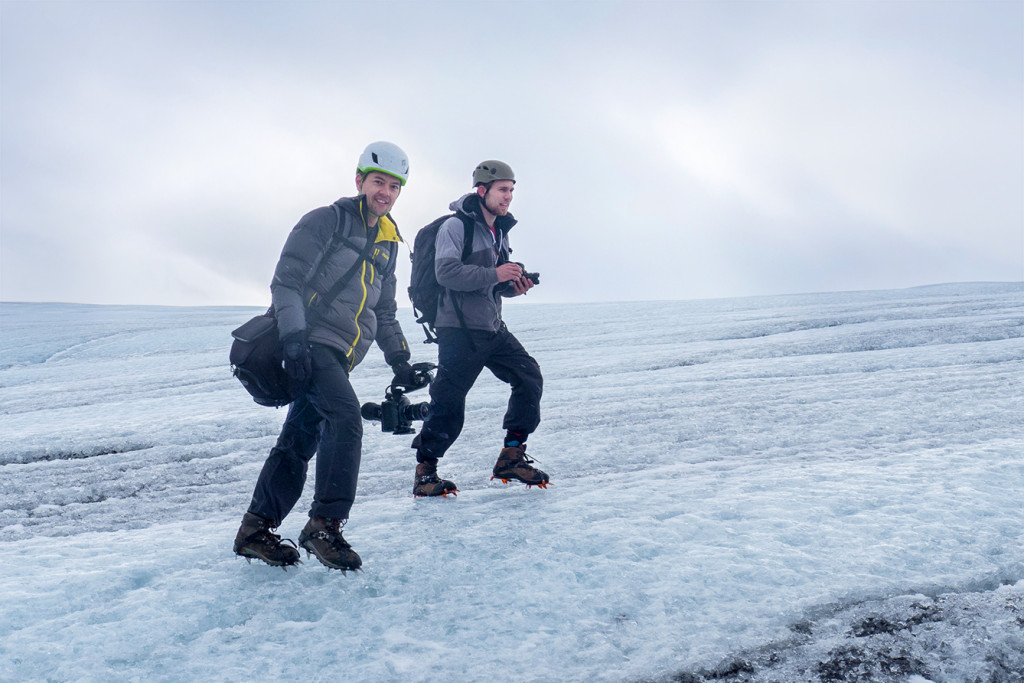
Photo By Klemen Premrl
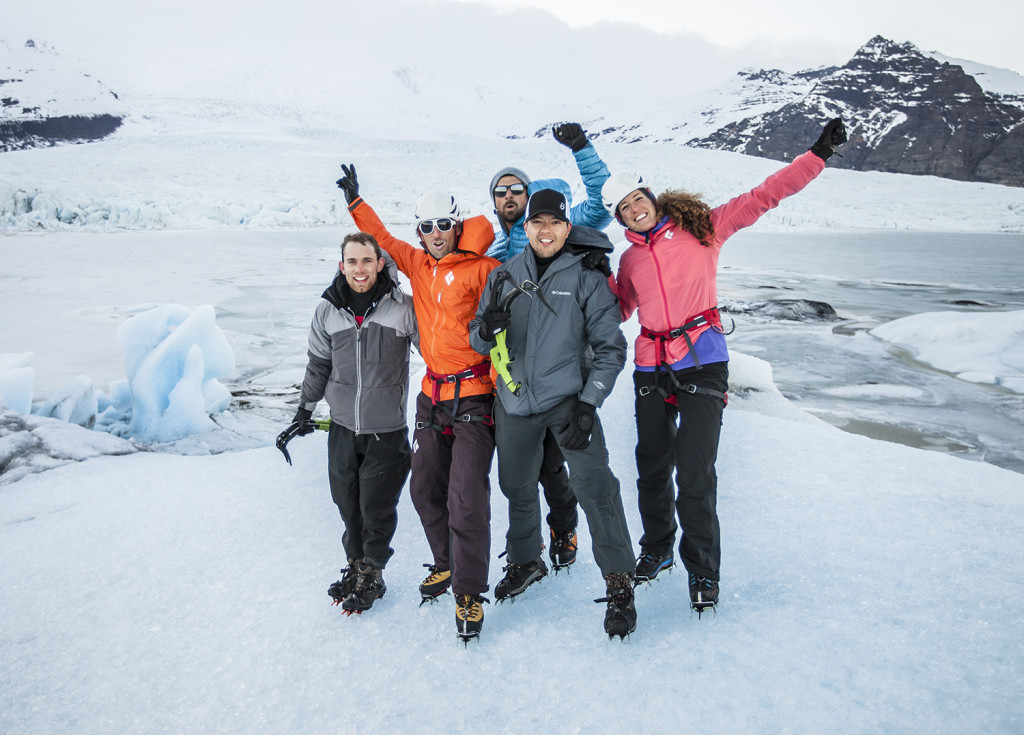
Photo By Björgvin Hilmarsson

